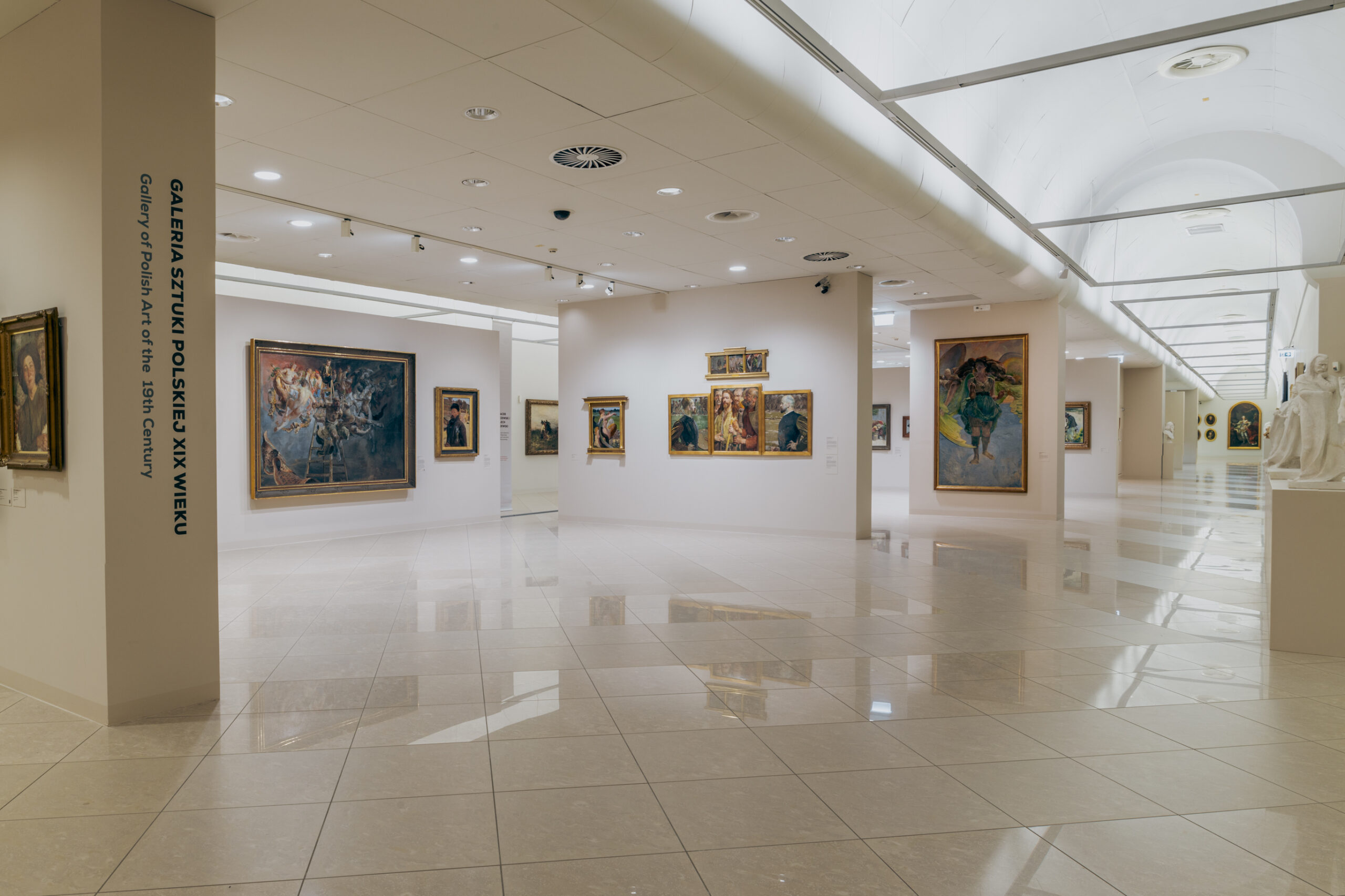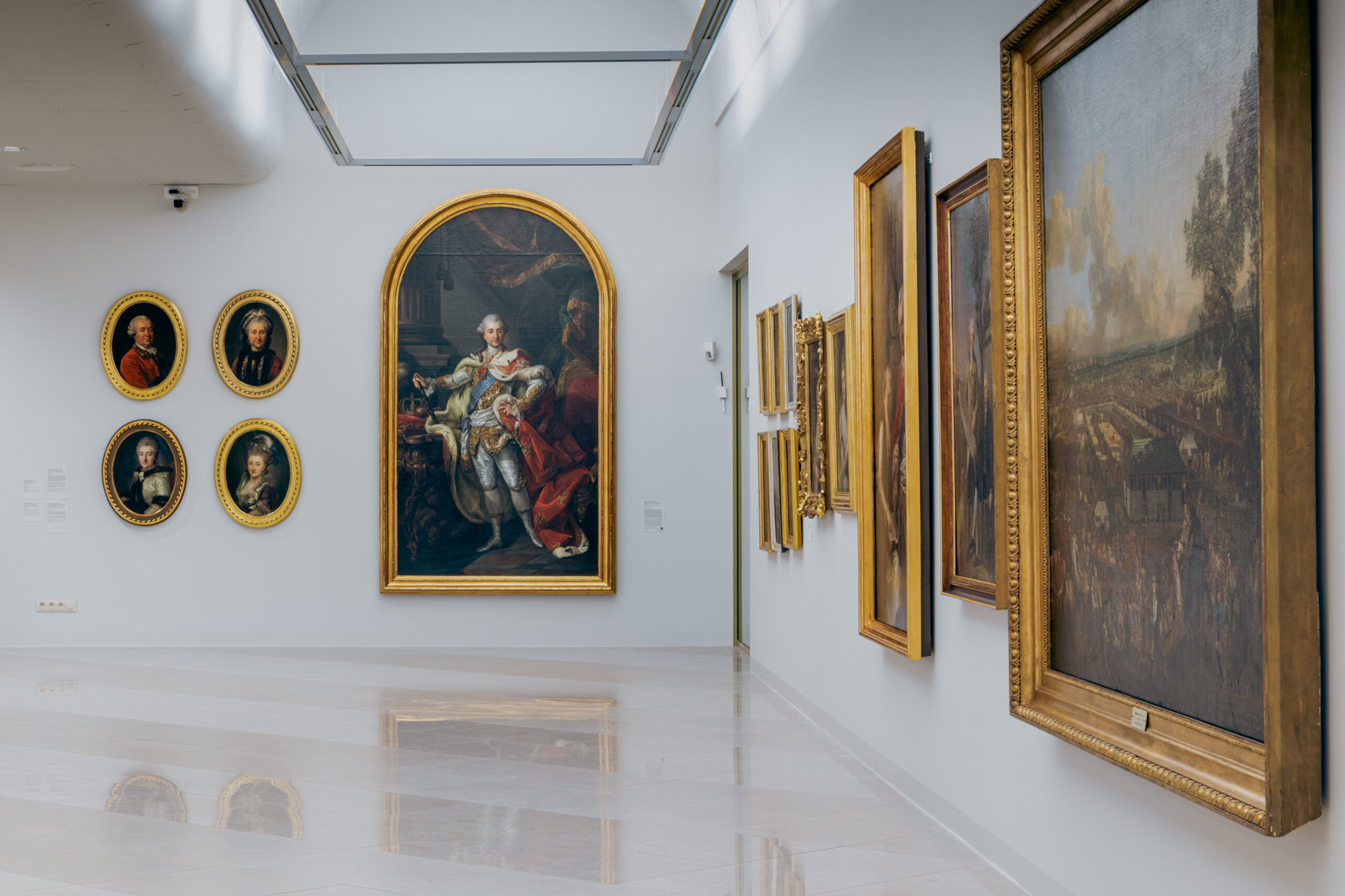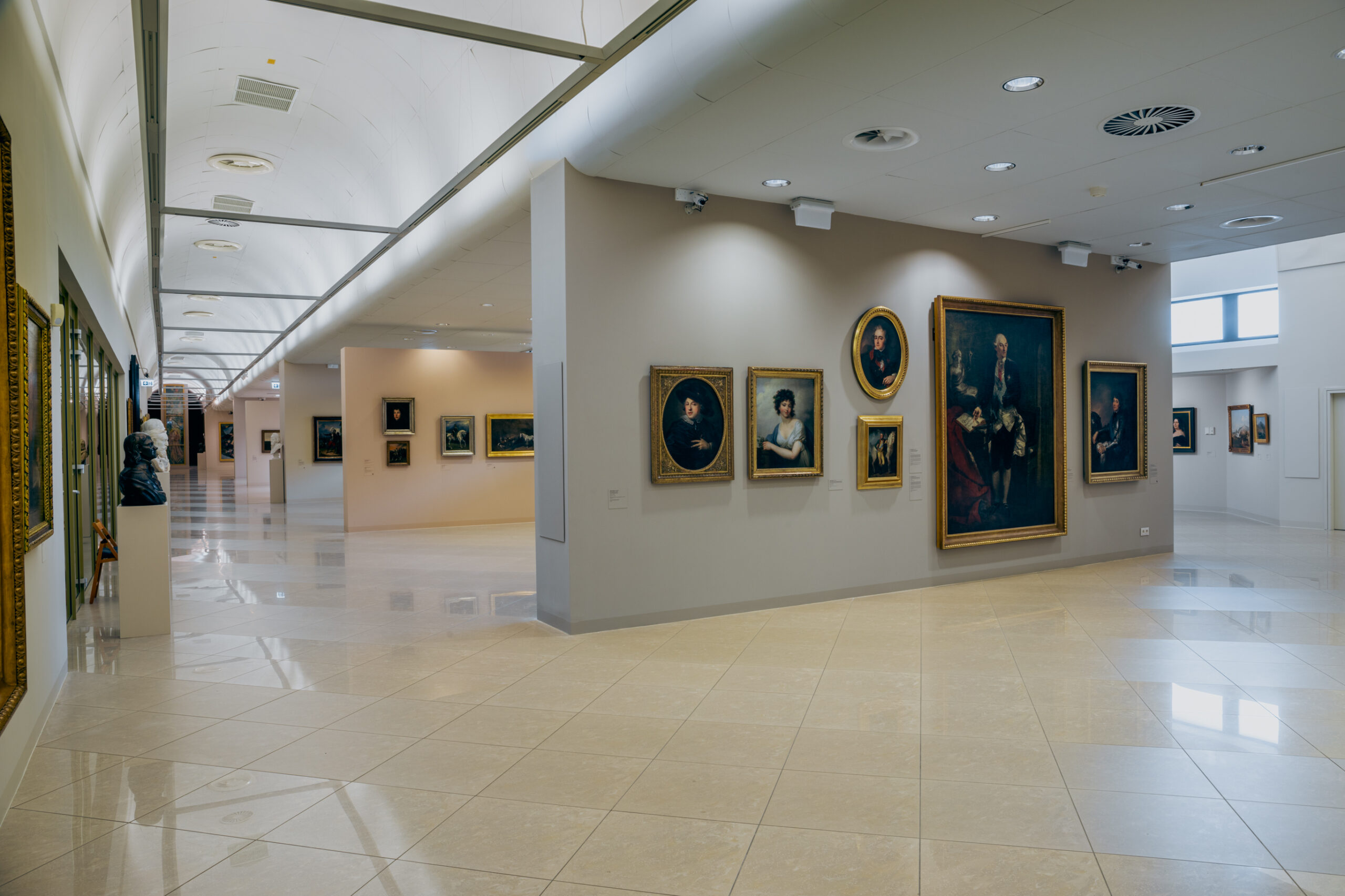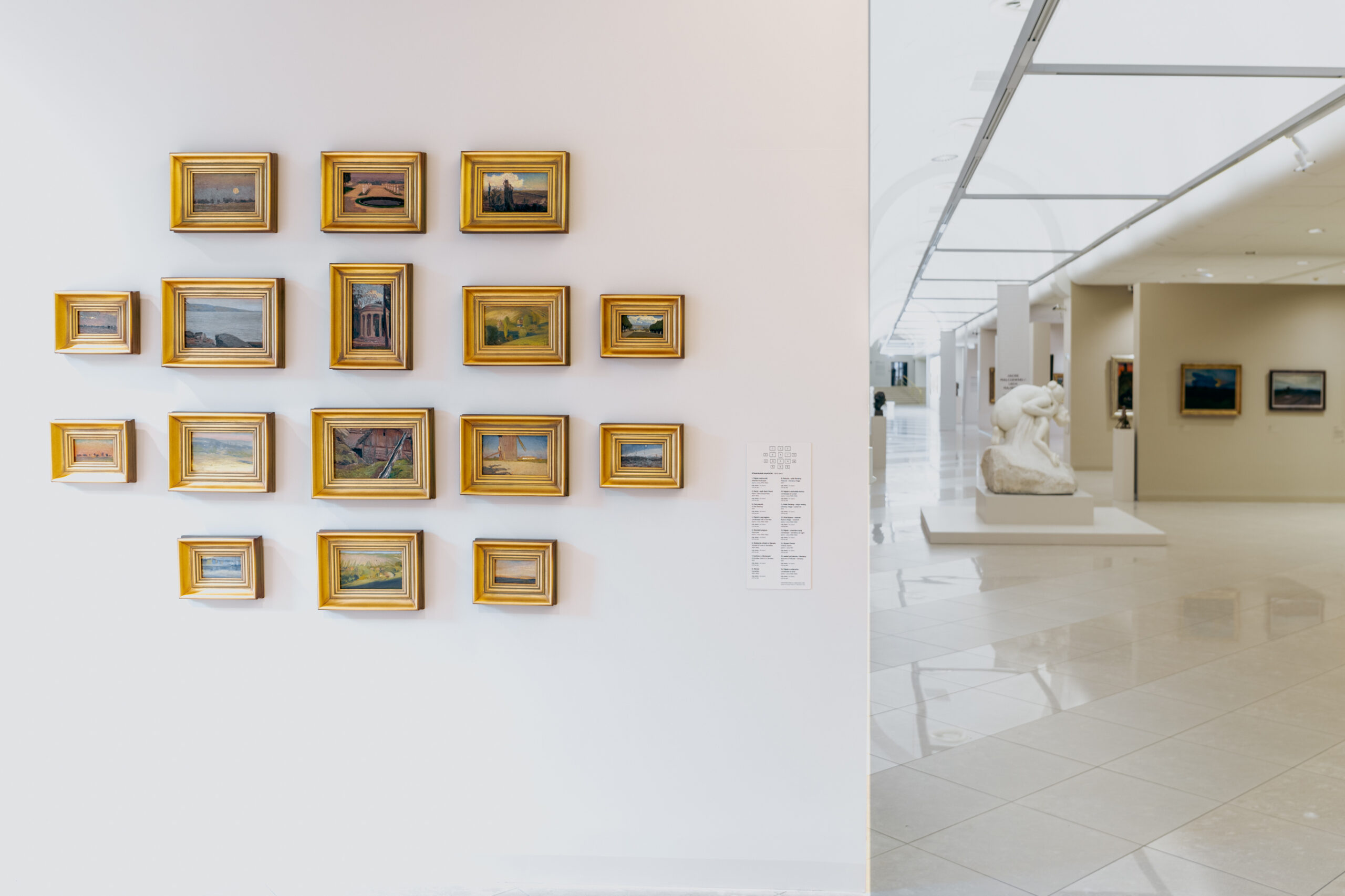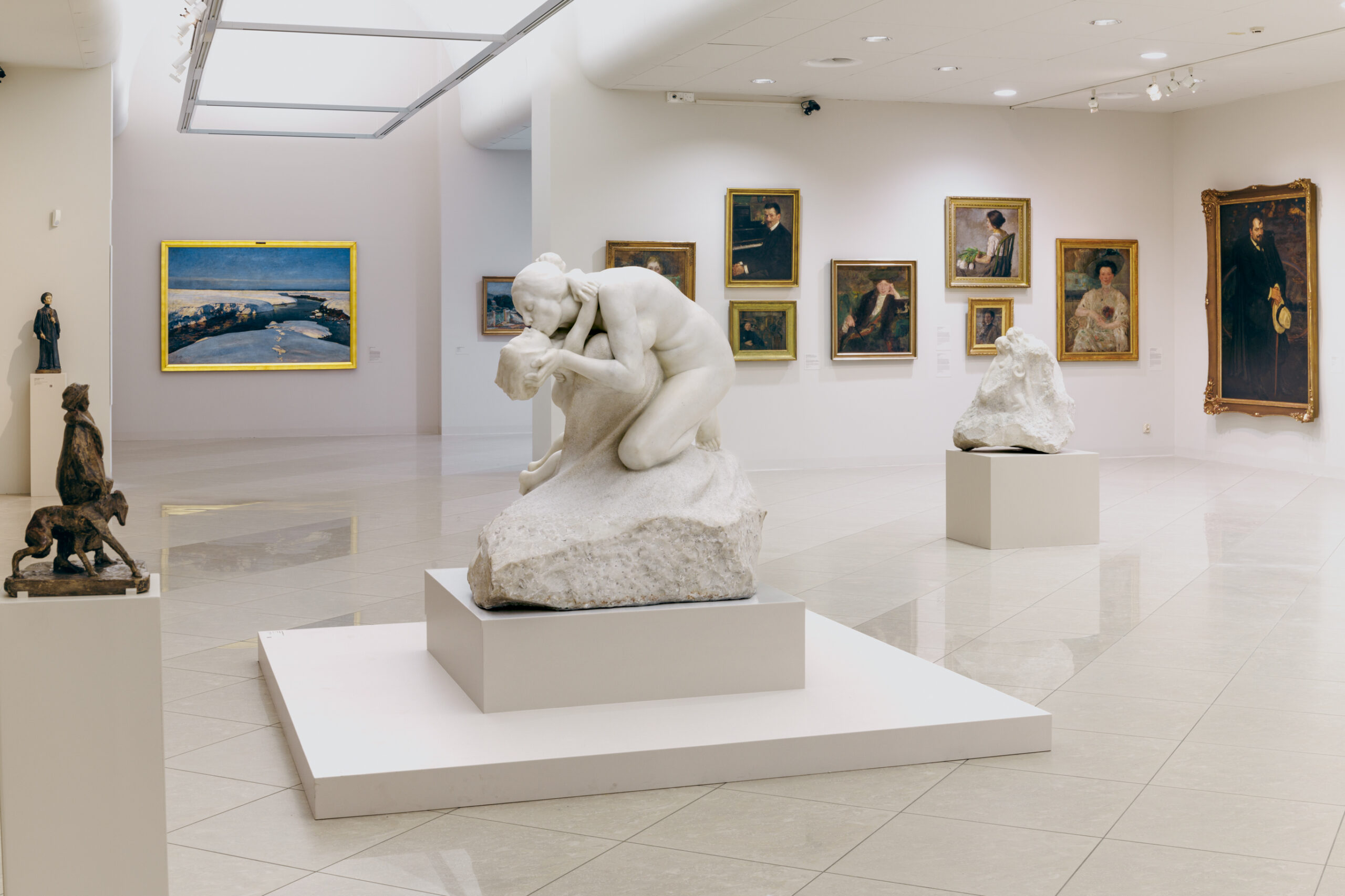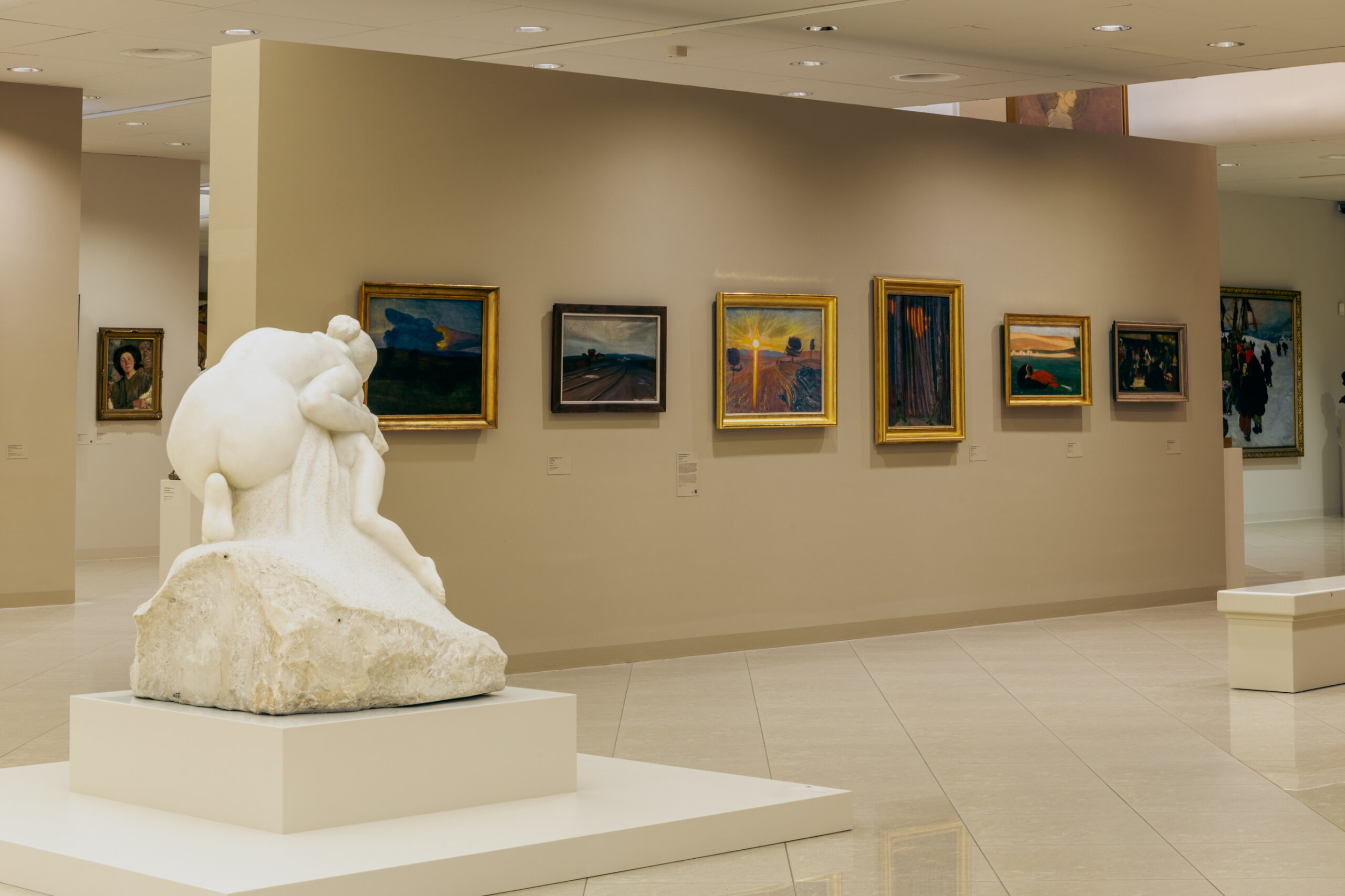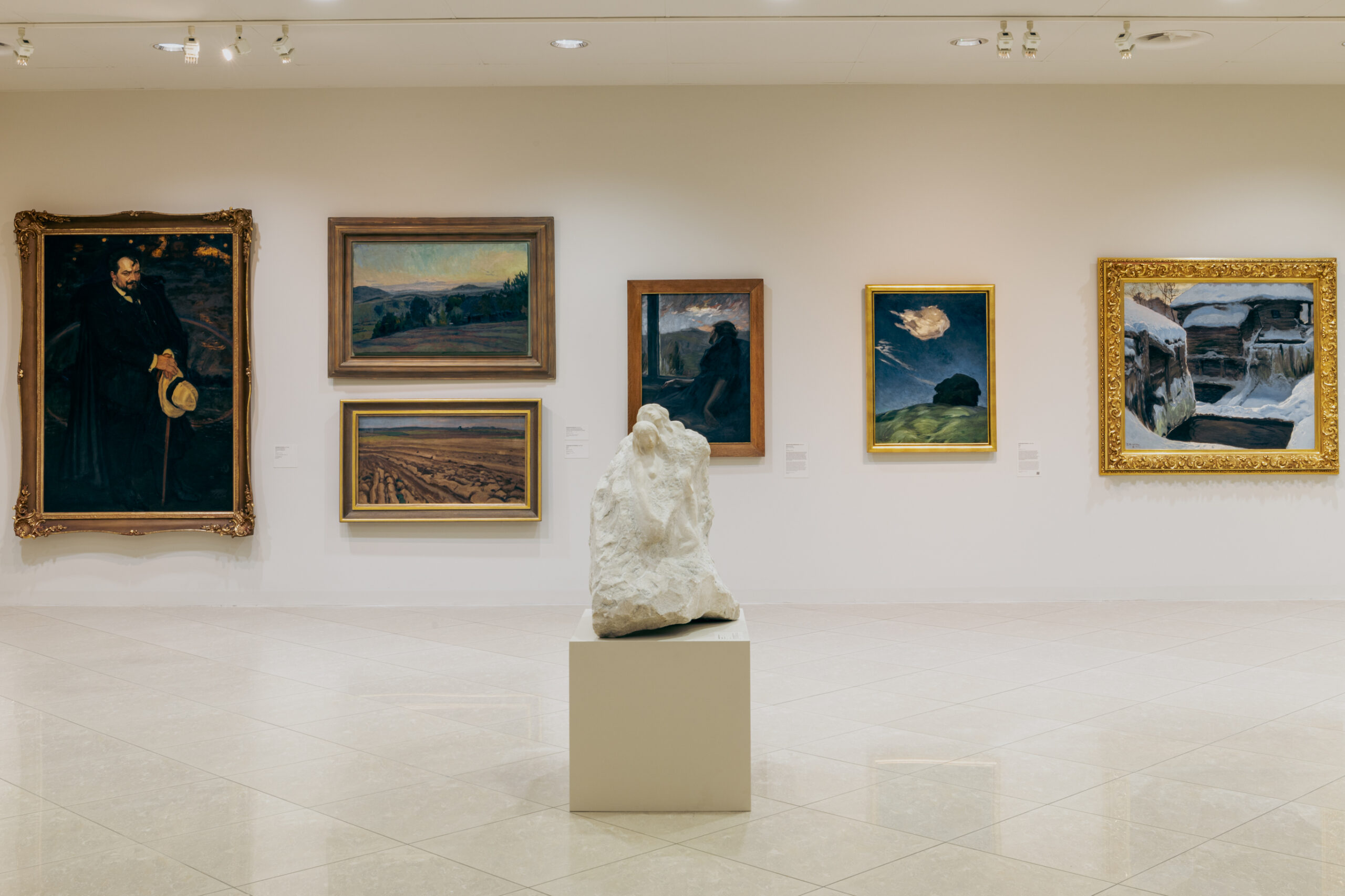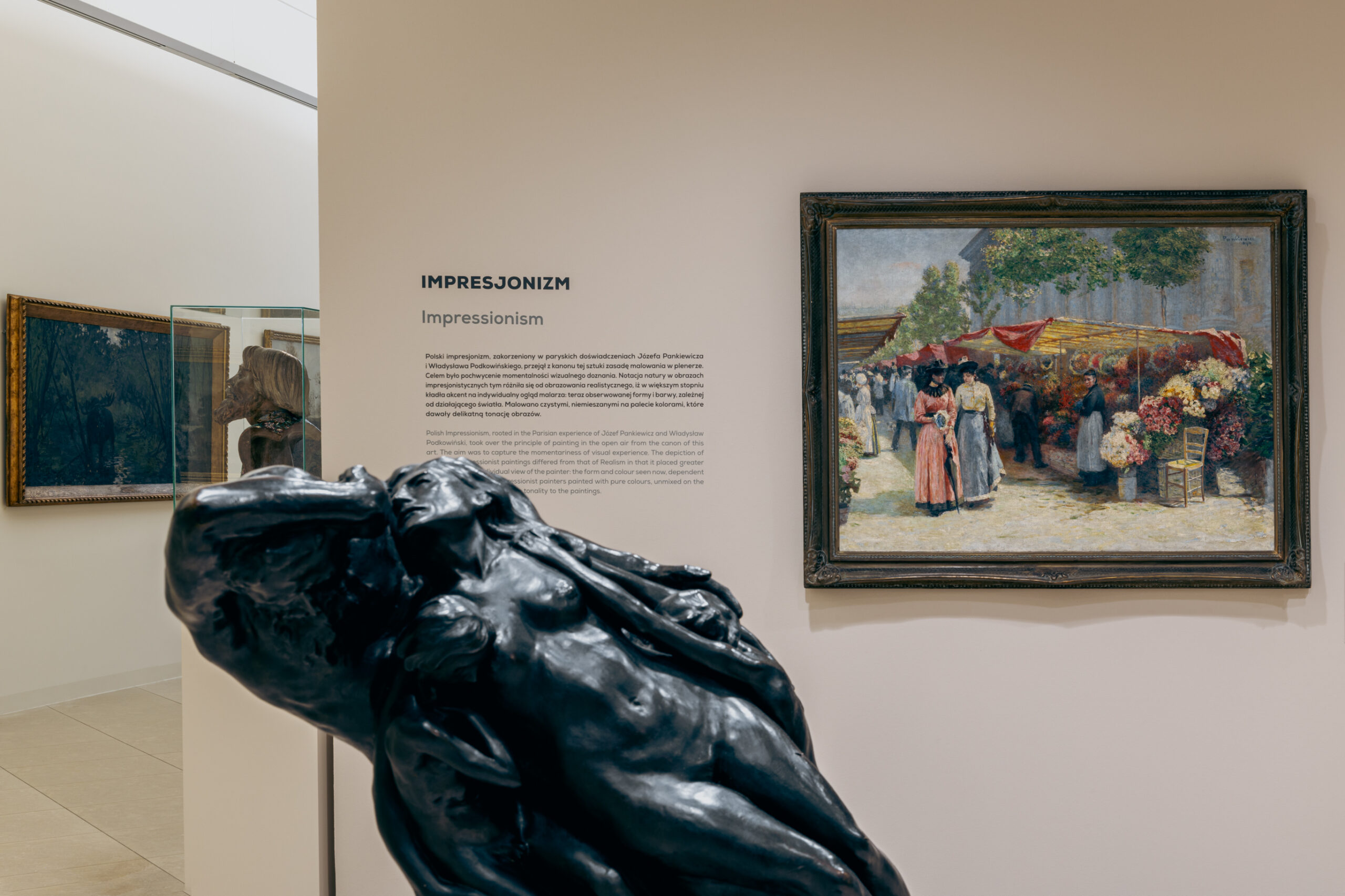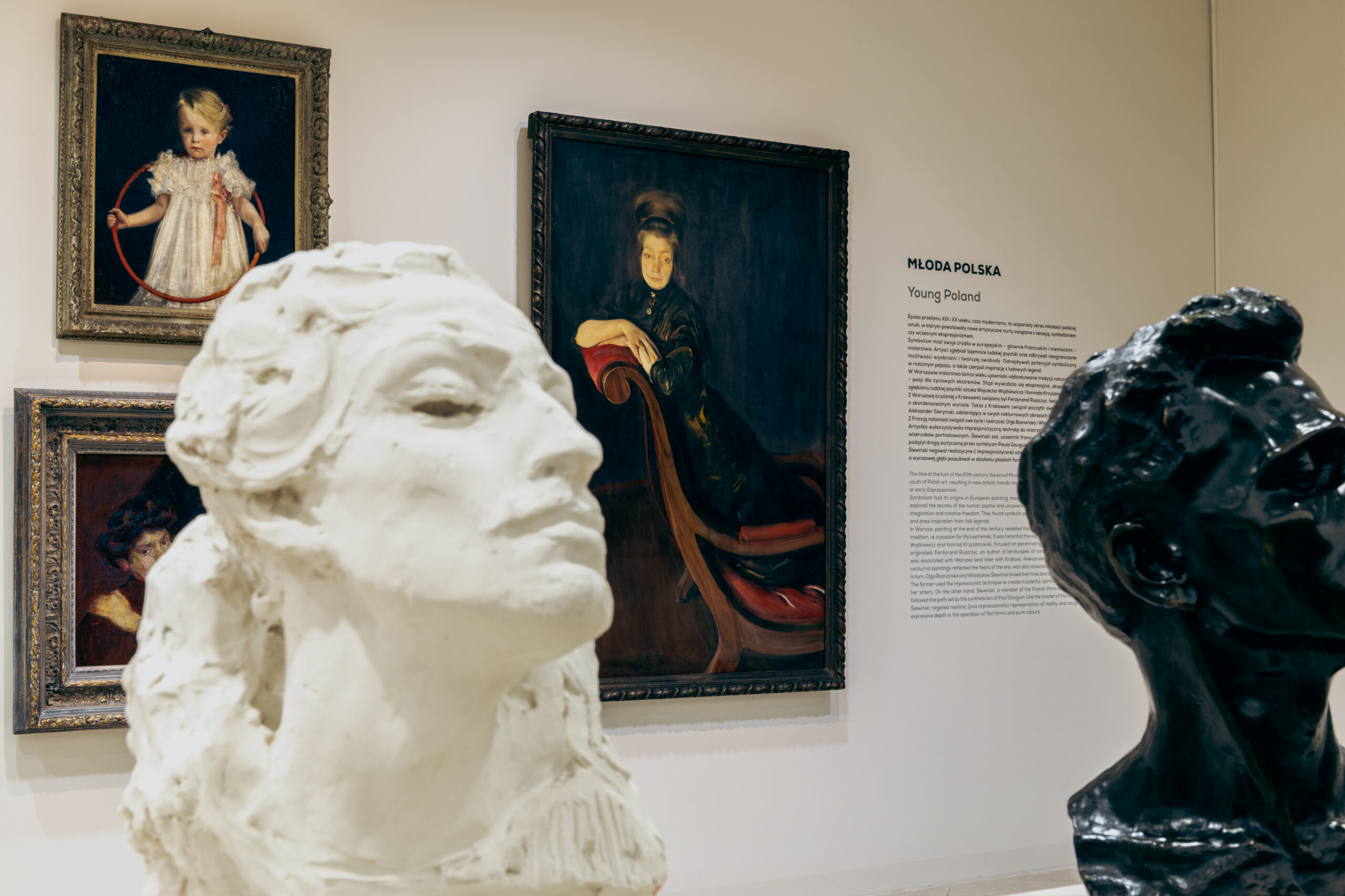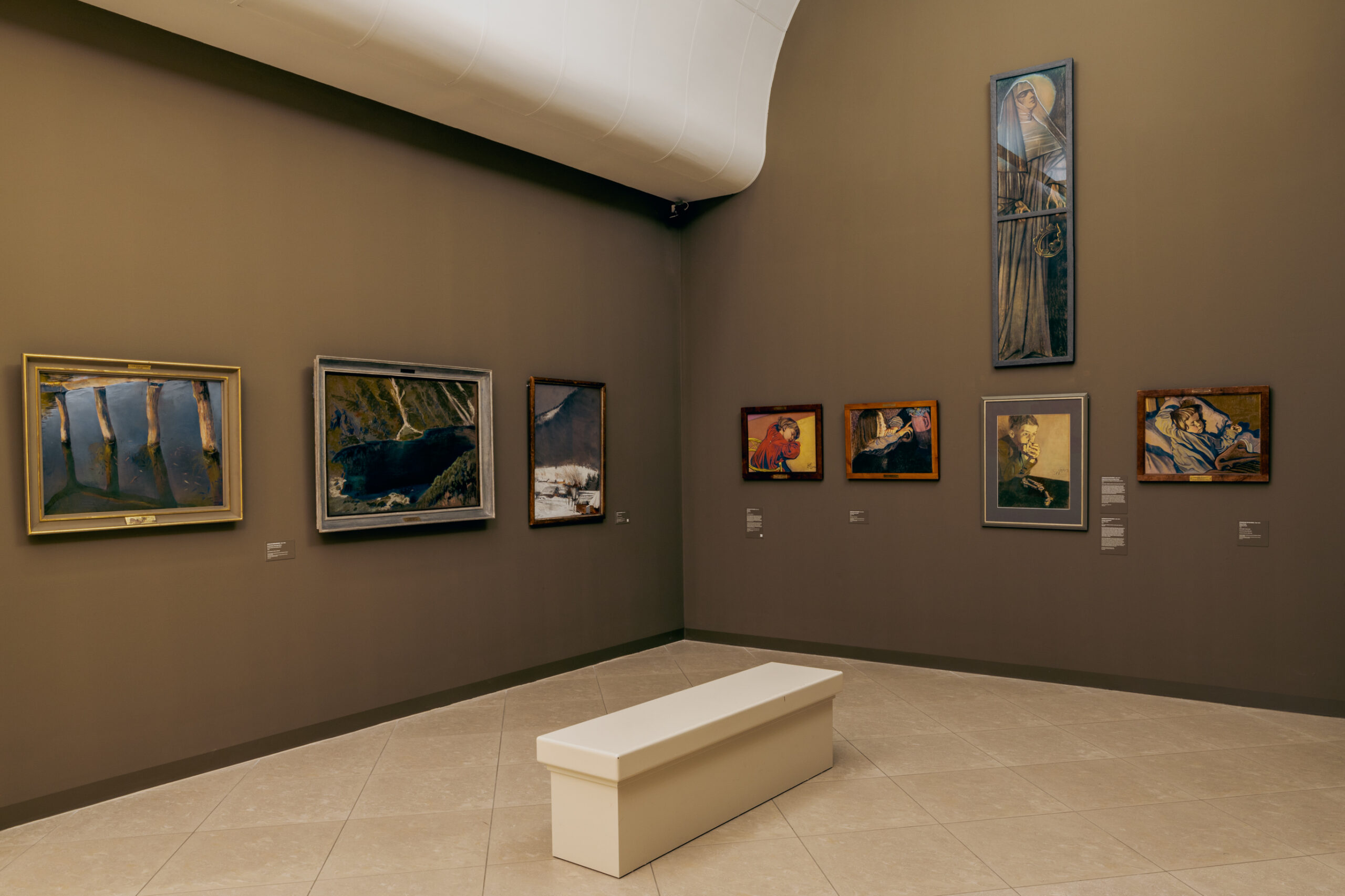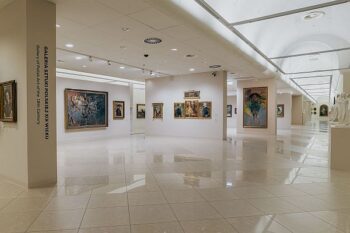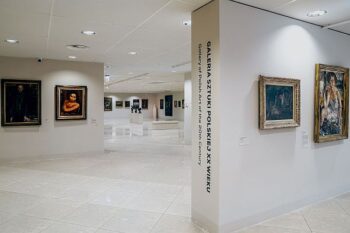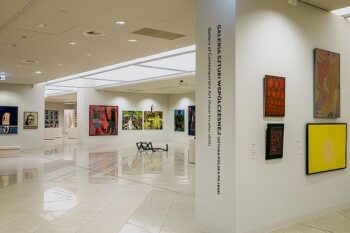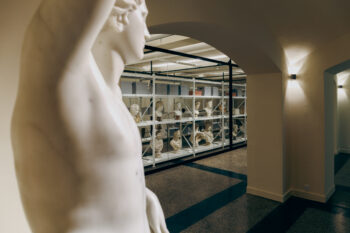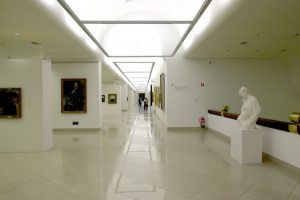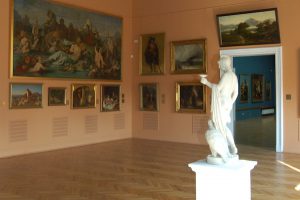Gallery of Polish Art of the 19th Century
The exhibit of the 3rd floor is arranged chronologically; starting on the right (Enlightenment), it proceeds towards the left (Young Poland). The set of works representing the Enlightenment stresses the role of King Stanislaus Augustus’ patronage of the arts (Marcello Bacciarelli, Bernardo Bellotto known as Canaletto), showcases portraits of Polish aristocrats (Joseph Grassi), and mythological compositions following the aesthetic tenets of Classicism (Franciszek Smuglewicz). The part dedicated to Polish Romanticism has its own unique character. This art glorifies emotion and individualism (Aleksander Orłowski, Piotr Michałowski), is fascinated with nature and exoticism (January Suchodolski) and demonstrates efforts to regain national independence and fosters the Napoleonic legend (Kazimierz Wojniakowski). Historicism, a current based on academic virtuosity and in-depth studies of the past, is represented by the painters from the Krakow School (Jan Matejko) and the Warsaw School (Wojciech Gerson). At its time it was a powerful expression of the artists’ position on the then history of the nation. The set of Realistic paintings is made up of landscapes and genre scenes displaying an honest approach to nature, stripped of any idealisation, and enhancing discreet moods.
A bold rejection of academic convention was e.g. the result of artistic contacts with the École de Barbizon (Józef Szermentowski) and the Munich circle (Maksymilian Gierymski, Józef Brandt). The group of Impressionistic works stands out due to the intense colour gamut, unsophisticated topics, and sketchiness (Józef Pankiewicz, Władysław Podkowiński, Leon Wyczółkowski). It includes the famous painting regarded the first work of Polish Impressionism: Flower Market in Front of the Madeleine Church in Paris.
The 3rd floor exhibit culminates with the exquisite works by Jacek Malczewski, Polish major symbolist painter (together with the Raczyński Foundation, the museum holds the largest collection of this artist’s works). Located opposite the stairs, the monograph inaugurates the last and most sophisticated part of the gallery, dedicated to the young of Young Poland. Of special interest here are the compositions which are folklore-inspired (Teodor Axentowicz, Władysław Jarocki, Kazimierz Sichulski), symbolic (Leon Wyczółkowski, Witold Pruszkowski, Wacław Szymanowski), follow the decorative style of the Secession (Stanisław Wyspiański, Józef Mehoffer), and are expressive of the moods of the fin de siecle as well as early Expressionism (Wojciech Weiss, Witold Wojtkiewicz). Further on, the gallery proudly presents works by artists linked to France: Paris (Olga Boznańska, Aleksander Gierymski) and Brittany (Władysław Ślewiński) and a set of Modernist landscapes of less obvious takes on the topic, a testament to the unique sensitivity of Young Poland landscape artists (Ferdynand Ruszczyc, Jan Stanisławski, Stanisław Kamocki).
Pastels are exhibited in a separate, dimmed space. Young Poland artists disseminated the technique; their portraits and landscape are proof of their craftsmanship and an eye for decorative detail (Stanisław Wyspiański, Leon Wyczółkowski).
Throughout the floor, paintings are accompanied by numerous sculptures, busts following the style of Academism (Antoni Madeyski, Wiktor Brodzki) and symbolic Young Poland compositions (Wacław Szymanowski, Xawery Dunikowski). The works enter into dialogue with the surrounding paintings, while supplementing their themes, and reflecting the styles of successive currents. Many of the sculptures exhibit strong influences by August Rodin’s art; they dazzle the viewer with their expressiveness, bold solutions, and a free rendition of non finito (Franciszek Flaum, Konstanty Laszczka).


